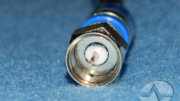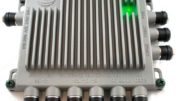There’s an old saying that works in so many situations. “Test, don’t guess.” Whether you’re a DIYer who wants to create the perfect home theater or an installation professional, proper testing is really critical. You don’t want something breaking just when you need it.
The culture of testing
So many times, we don’t test the cables we make or install. It seems like it’s not worth it, since most cables work right the first time. Even if you make them yourself, they’re going to do well once you have some experience. But, it doesn’t take a lot of time to do some quick tests to make sure you have everything just the right way.
Testing with a multimeter
The simplest type of testing just takes one tool: a multimeter. A multimeter will measure voltage, amperage, and resistance by touching its terminals to different parts of a connection. It’s good for detecting short circuits and bad wiring. While you can pay a lot for a multimeter, you don’t have to. Solid Signal has meters starting at a very affordable price. More expensive meters might have more options for reporting, or be more durable, but if you’re looking to have an all purpose tool at your disposal, a multimeter doesn’t have to cost a lot.
Using a multimeter to test cables is simple. There’s a setting on the meter for resistance or continuity. If you have the setting right, touching the two terminals together will generally cause a beep or buzz. You want to then touch two different parts of the cable, for example the outer shield and the center conductor. If you get the beep or buzz, that cable’s bad. Then touch one end of the center conductor and the other end as well. You should get a beep or buzz indicating there’s no break in the line.
Obviously this is a very simple test and it’s only going to work if you can touch both ends of the cable at the same time. It won’t work for cables that are in the wall.
Cable Testers
There’s a better way to test cables that are already in place. You can use a dedicated cable tester. Solid Signal has ones for every need. In many cases, these testers will let you not only check the quality of a cable, but will let you tell one cable from another. This is done with different ends that go on one side of the cable. The tester can detect which end is in use.
To use a tester like this, connect one end of a cable to the tester. Connect one of the supplied terminators to the other end. While there are a lot of different kinds of testers, all of them basically work the same.
When you get to more complex cables like HDMI, you may need to use really complex test equipment to check how well the cable is performing. If you install this sort of cable in walls on a regular basis, it’s worth having a good HDMI tester on hand. They’re not that expensive. HDMI problems are rare but when they do happen, they’re very hard to figure out.
Get the test equipment you need
No matter what kind of cable you have, and what kind of test you need to perform, you’ll find everything you need when you shop the great selection at Solid Signal!





